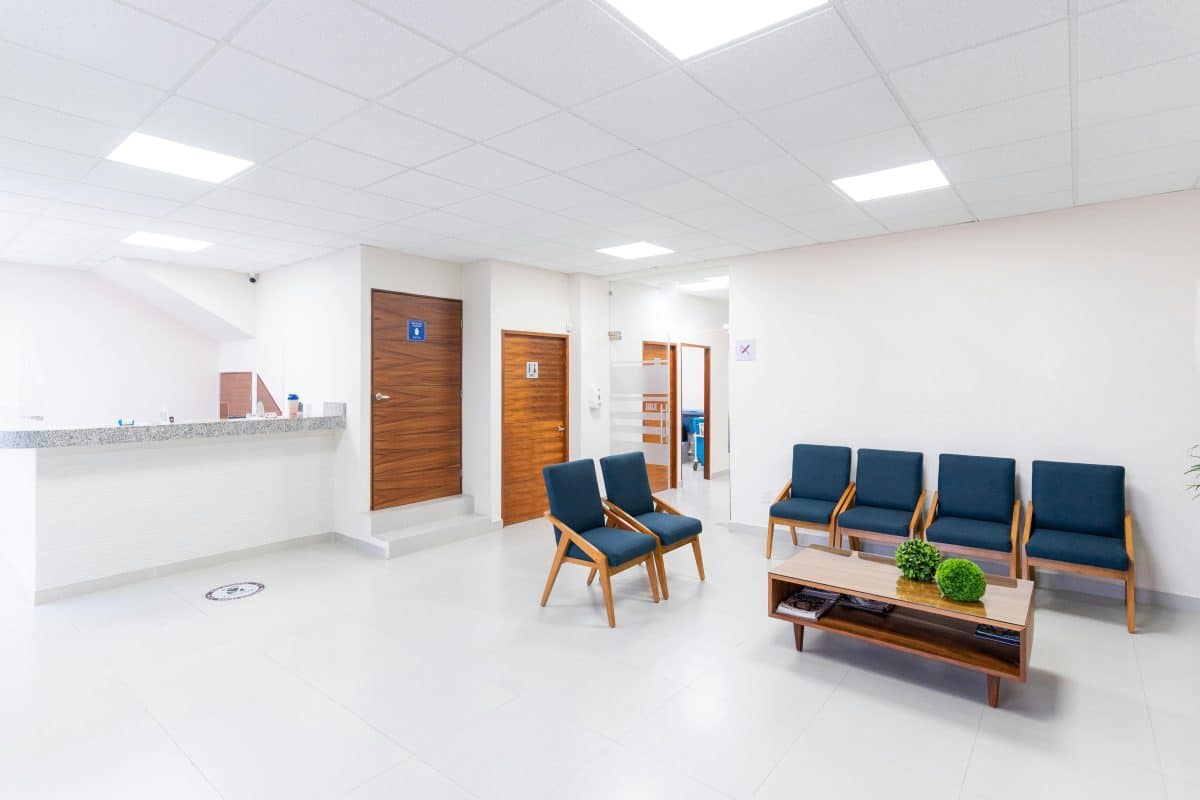Healthcare Privacy: Sound Masking for Waiting Rooms, Clinics, and Pharmacies
 In healthcare, privacy isn’t a decorating choice—it’s operational hygiene. Front-desk check-in, triage questions, and pharmacy pickups all involve personal details that shouldn’t carry beyond the counter. Healthcare sound masking introduces a barely noticeable background sound—engineered in spectrum and level—to make nearby speech less intelligible to unintended listeners. Done correctly, staff speak at normal volume, patients feel safer, and the environment complies more easily with privacy expectations.
In healthcare, privacy isn’t a decorating choice—it’s operational hygiene. Front-desk check-in, triage questions, and pharmacy pickups all involve personal details that shouldn’t carry beyond the counter. Healthcare sound masking introduces a barely noticeable background sound—engineered in spectrum and level—to make nearby speech less intelligible to unintended listeners. Done correctly, staff speak at normal volume, patients feel safer, and the environment complies more easily with privacy expectations.
Why Healthcare Sound Masking Works
Human speech becomes understandable when consonants (the “t, s, k” sounds) rise above the background. Healthcare sound masking gently lifts the ambient sound floor with a calibrated signal, narrowing that gap so syllables decay before they can be reconstructed a few seats away. Conversations remain clear for the participants, but lose intelligibility at short distance—privacy without shushing.
Where to Prioritize Healthcare Sound Masking
Start with highest-risk zones: registration desks adjacent to seating, pharmacy pickup windows, corridors outside exam rooms, and open triage bays. Hard finishes (glass, tile, drywall) reflect sound and extend its reach; pairing sound masking with small material upgrades—acoustic tile over the desk, a fabric panel behind it—compounds the effect and reduces required masking levels.
Commissioning: Tuning, Not Guesswork
Masking isn’t a white-noise speaker in the ceiling. Emitters distribute a shaped spectrum specifically tuned to room size, layout, and finishes. Commissioning sets octave-band targets so the sound is perceived as a neutral “hush,” not a hum. After move-ins or layout changes, technicians re-verify levels; seasonal checkups keep performance steady as occupancy patterns shift.
Pair Masking with Absorption and Layout
Masking does its best work after reflections are tamed. Add modest absorption—acoustic tile at reception canopies, fabric panels near corners, felt baffles over hard corridors—then let healthcare sound masking smooth out what remains. Simple layout tweaks help too: angle check-in stations away from seating, add a modest standing zone between the counter and chairs, and relocate loud peripherals (printers, ice machines) out of patient paths.
Comfort, Throughput, and a Privacy-First Culture
Facilities that treat privacy as environmental design—not just policy—see fewer repeated questions, quicker intake, and less tension at busy counters. Healthcare sound masking supports that culture by reducing incidental overhear, so patients share accurately the first time and staff avoid voice strain from over-projecting.
Schedule a quick consult to design healthcare sound masking that protects privacy without disrupting care.






